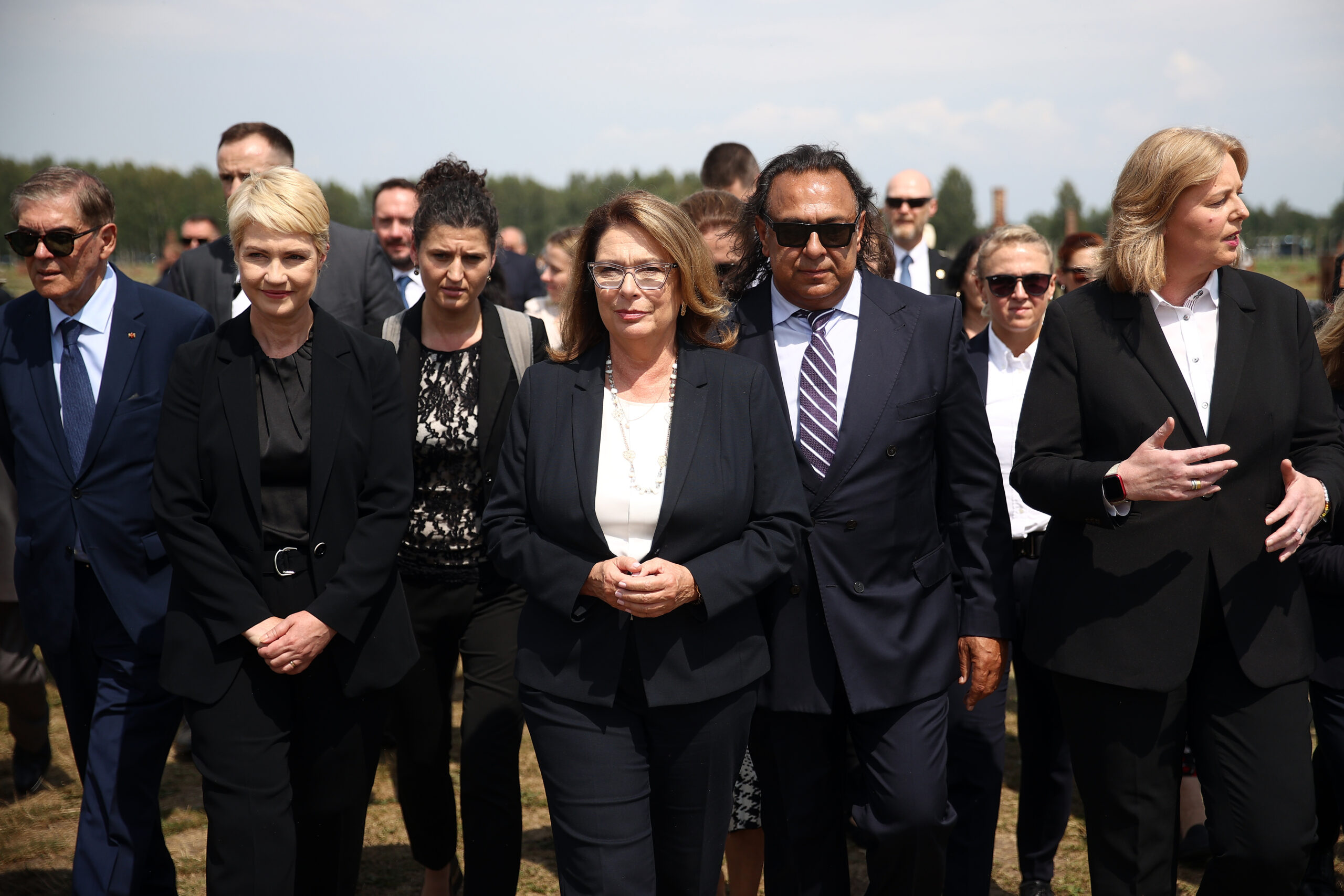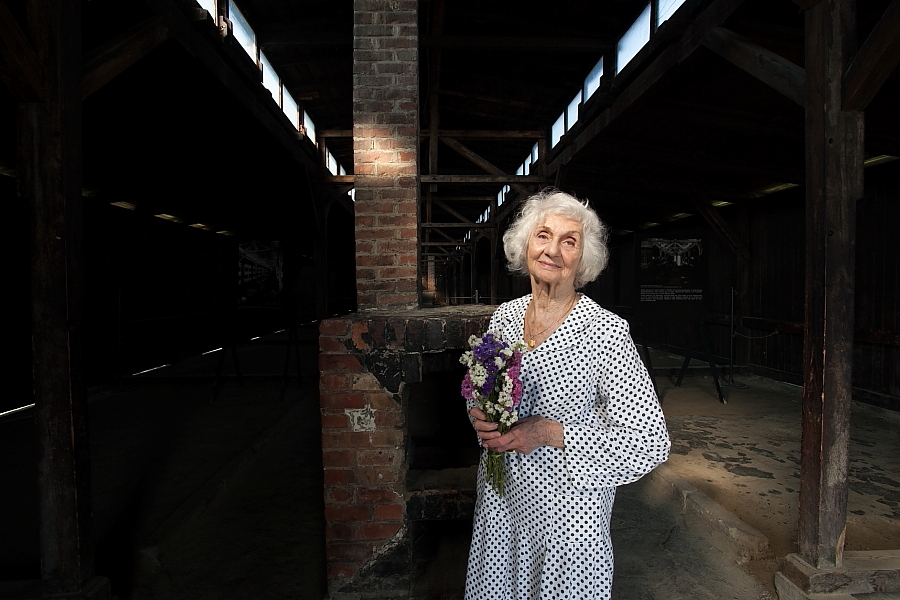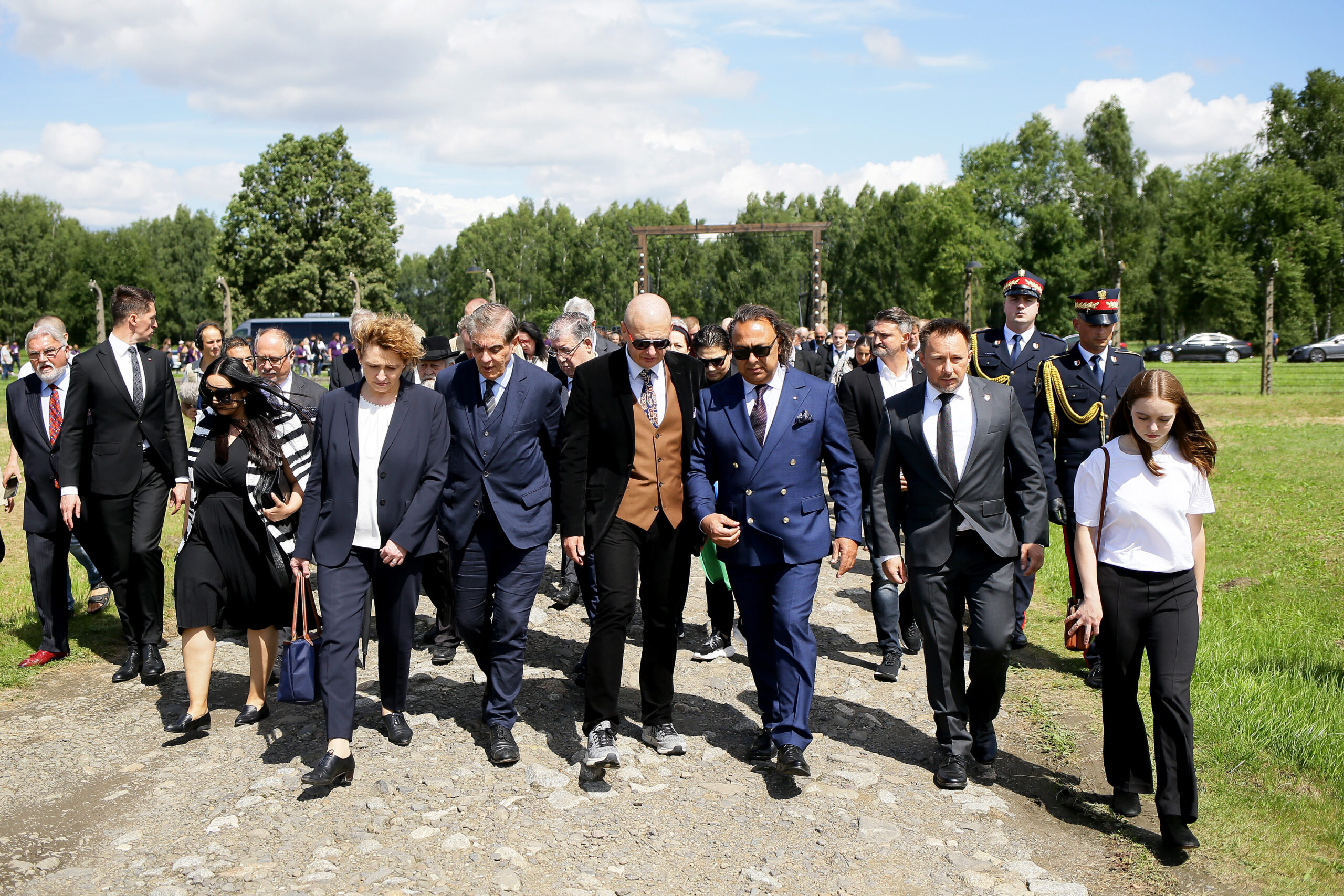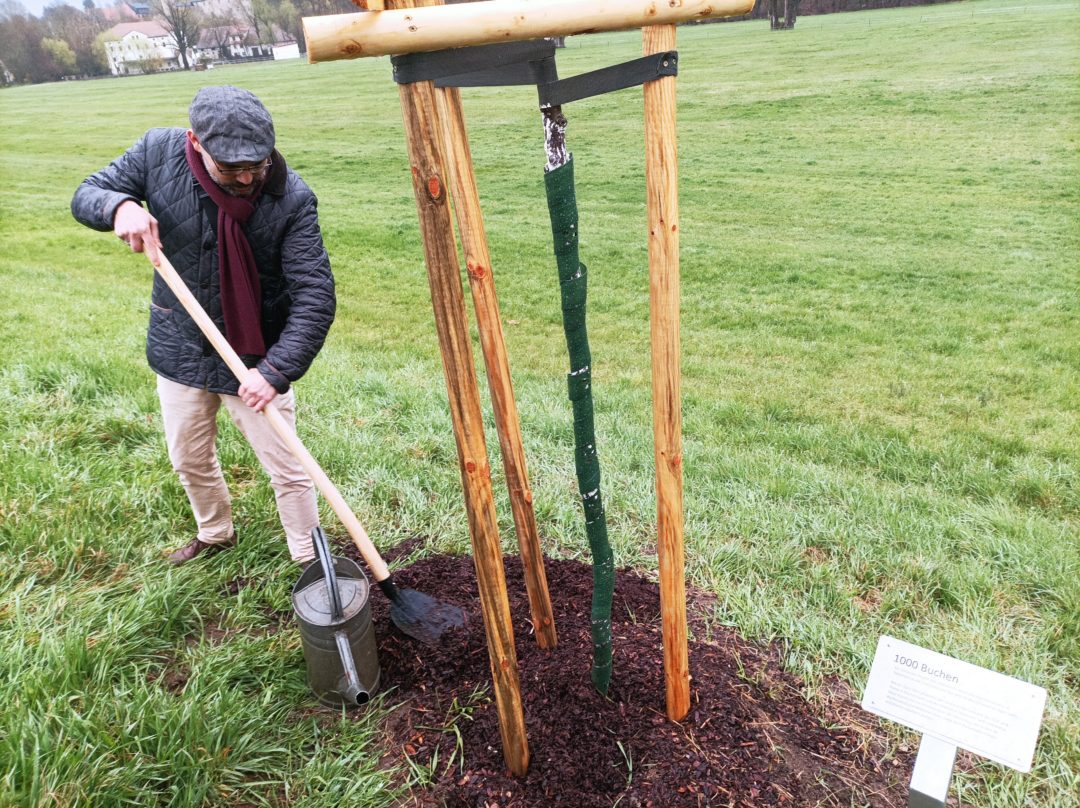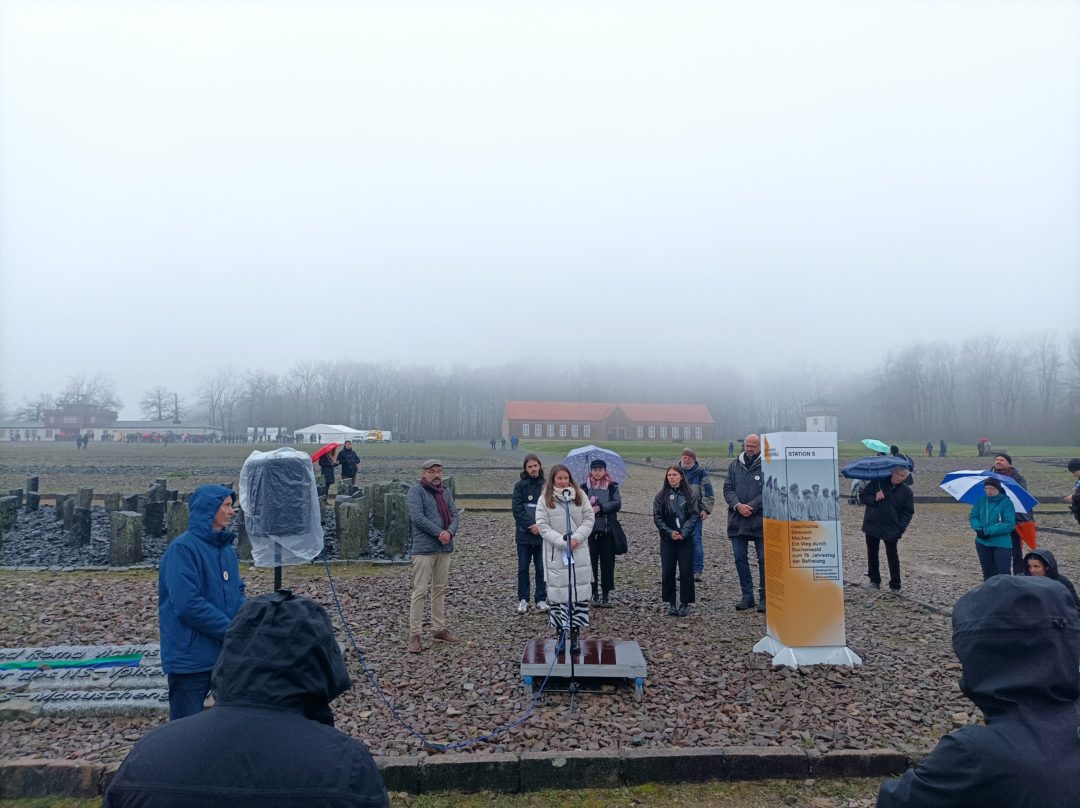In April 1945, the Buchenwald and Mittelbau-Dora concentration camps were liberated. This year’s commemoration focused on remembering the imprisoned Sinti and Roma.
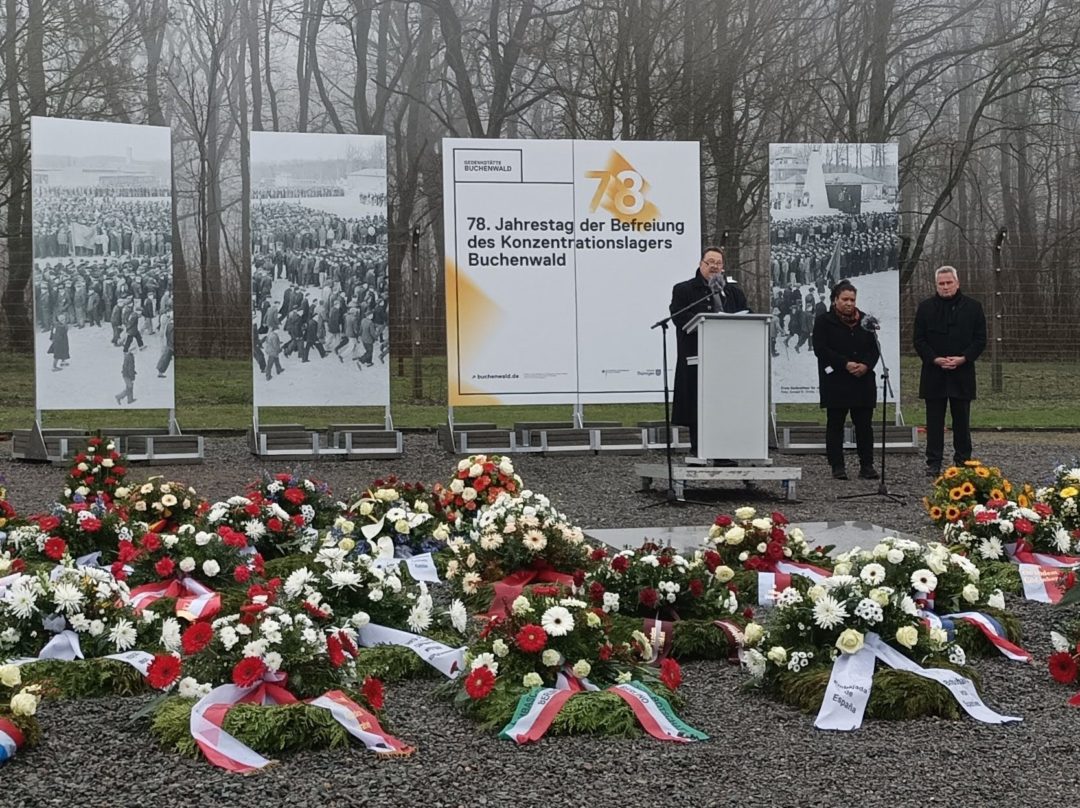
In the context of the mass arrests in 1938/1939, hundreds of Sinti and Roma were also deported to concentration camps – including Buchenwald. Abused as labor slaves for SS-owned factories, a large number of the prisoners fell victim to the inhumane living conditions and the terror of the guards.
In 1944, the SS brought about 1,800 Sinti and Roma from Auschwitz-Birkenau to Buchenwald. For most of them, the camp was only a transit station. After only a short time, the SS sent them on to Mittelbau-Dora, Ellrich or Harzungen. Here they are used as forced laborers under inhumane conditions; only a few survived.
On September 26, 1944, two hundred Sinti and Roma – most of them children and adolescents – were sent from Buchenwald concentration camp on an extermination transport to Auschwitz. Except for two survivors, they were all killed in the gas chambers two weeks later. Today, a memorial commemorates the deported and murdered Sinti and Roma at the former Block 14 in Buchenwald.
Jacques Delfeld, vice chairman of the Central Council of German Sinti and Roma, called on the German state and authorities in the main commemorative speech to finally start taking the growing antigypsyism seriously.
“Not only in Germany, but also in Europe, right-wing extremist and nationalist groups and parties are openly agitating against our democratic constitutional state and also against minorities. They are trying to make antigypsyist, antisemitic and racist arguments acceptable again and are fomenting violence.”
Jacques Delfeld
In view of the fate of several hundred thousand Sinti and Roma murdered by the National Socialists, he said, remembrance is an important requirement for recognizing dangers to our state today at an early stage.
Trees of remembrance for Sinti and Roma
Along the routes of the death marches on which the prisoners of Buchenwald concentration camp were driven by the SS to the Bavarian concentration camp Flossenbürg in April 1945, people have been planting trees collectively since 1999. They are financed through tree sponsorships. Thus, piece by piece, a path of living memory is being created.
For the Student Association of Sinti and Roma in Germany, Chairman Francesco Arman and student Melody Steinbach planted a beech tree during the commemoration ceremony. Melody Steinbach’s great-grandfather, Erwin Steinbach, was himself imprisoned in the concentration and extermination camps Auschwitz-Birkenau, Buchenwald and Mittelbau-Dora. He was one of the small number of Sinti and Roma who survived imprisonment.
Outdoor exhibition
The examination of the history of Buchenwald concentration camp is supported by many people and initiatives, including the Documentation and Cultural Center. Together with this network, the Memorial organizes the station trail “History. Knowledge. Action. A path through Buchenwald”. This involves visiting various historical sites in the former concentration camp, whose significance is explained through recitations, statements and an outdoor exhibition.
The various stations of the exhibition either pick up on events from the camp’s history or deal with specific groups of victims. At Station 5, dedicated to the murdered Sinti and Roma, Melody Steinbach recalled the fate of our people.
The station is sponsored by the Central Council of German Sinti and Roma together with the student association.
Further information on the Buchenwald Memorial
